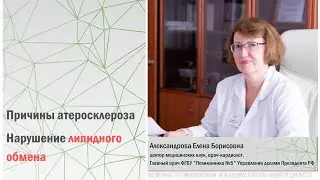One-third of Arctic Boreal Region is Now a SOURCE of Carbon instead of a SINK
One-third of Arctic Boreal Region is Now a SOURCE of Carbon instead of a SINK
Instead of being a strong sink of carbon, pulling vast amounts of CO2 out of the atmosphere, a large chunk of the Arctic region is no longer doing this. Instead, it has become a source of carbon (CO2) which is very concerning.
Please donate to http://PaulBeckwith.net to support my research and videos joining the dots on abrupt climate system mayhem.
After millennia as CO₂ sink, more than one-third of Arctic-boreal region is now a source
by Woodwell Climate Research Center
https://phys.org/news/2025-01-millenn...
Permafrost Pathways article:
Permafrost thaw is threatening Arctic communities and our global climate.
https://permafrost.woodwellclimate.org/
New Peer-reviewed paper:
Wildfires offset the increasing but spatially heterogeneous Arctic–boreal CO2 uptake
Abstract
The Arctic–Boreal Zone is rapidly warming, impacting its large soil carbon stocks. Here we use a new compilation of terrestrial ecosystem CO2 fluxes, geospatial datasets and random forest models to show that although the Arctic–Boreal Zone was overall an increasing terrestrial CO2 sink from 2001 to 2020 (mean ± standard deviation in net ecosystem exchange, −548 ± 140 Tg C yr−1; trend, −14 Tg C yr−1; P less than 0.001), more than 30% of the region was a net CO2 source. Tundra regions may have already started to function on average as CO2 sources, demonstrating a shift in carbon dynamics. When fire emissions are factored in, the increasing Arctic–Boreal Zone sink is no longer statistically significant (budget, −319 ± 140 Tg C yr−1; trend, −9 Tg C yr−1), and the permafrost region becomes CO2 neutral (budget, −24 ± 123 Tg C yr−1; trend, −3 Tg C yr−1), underscoring the importance of fire in this region.
Link: https://www.nature.com/articles/s4155...
Another new Peer-reviewed paper:
Large emissions of CO2 and CH4 due to active-layer warming in Arctic tundra
Abstract
Climate warming may accelerate decomposition of Arctic soil carbon, but few controlled experiments have manipulated the entire active layer. To determine surface-atmosphere fluxes of carbon dioxide and methane under anticipated end-of-century warming, here we used heating rods to warm (by 3.8 °C) to the depth of permafrost in polygonal tundra in Utqiaġvik (formerly Barrow),
Alaska and measured fluxes over two growing seasons. We show that ecosystem respiration is ~30% higher in warmed plots than in control plots (0.99 μmol m−2 s−1 versus 0.67 μmol m−2 s−1
, p less than 0.0001, n = 79). Additionally, the observed temperature sensitivity (Q10 of 2.8) is higher than that imposed for soil in Earth system models or reported by arctic experiments warming only the surface. A shoulder-season warming experiment revealed that rapid snow melt, which is becoming a more common event, can result in large methane emissions that may have otherwise been oxidized to carbon dioxide. Thus, warming promotes greenhouse gas emissions from the whole, deepening active layer and may contribute to climate change amplification.
Link: https://www.nature.com/articles/s4146...
Los Gatos Research Ultraportable Greenhouse Gas Analyzer
https://amof.ac.uk/instruments/los-ga...
Please donate to http://PaulBeckwith.net to support my research and videos joining the dots on abrupt climate system mayhem.







